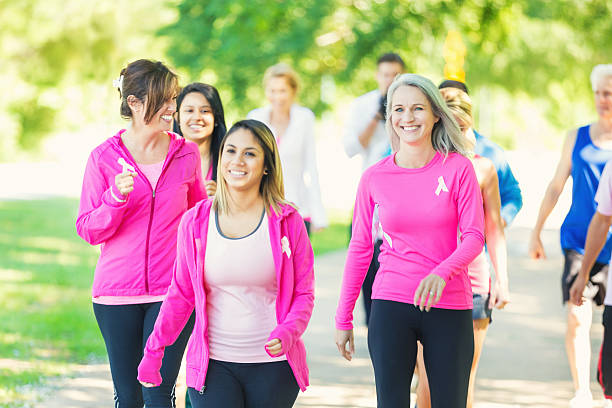Brisk walking is a good cardio exercise that doesn’t require any special equipment. As long as you have comfortable sneakers, you can get started today.
But to make sure you get the best workout, there are a few things to consider.
Target Heart Rate
Measuring your heart rate is one way to determine if you’re walking fast enough to achieve a good workout. Aim for a target heart rate of 50 to 85 percent of your maximum heart rate.
According to the American Heart Association, during moderate-intensity exercise, your target heart rate should be around 50 to 70 percent of your maximum heart rate, while vigorous activity calls for approximately 70 to 85 percent of your maximum heart rate.
Steps per Minute
Counting your steps can help you gauge your pace. Aim to walk no less than 100 steps per minute to achieve significant benefits from your workout. If possible, use a fitness tracker to get more accurate data.
The Talk Test
The third method of determining your walking pace requires no calculations. Instead, it involves paying attention to your ability to talk while brisk-walking.
- If you can comfortably hold a conversation with some breathlessness, you’re likely walking at a moderate but brisk pace.
- If you find it challenging to talk easily, your pace is likely vigorous.
- If you can effortlessly sing out loud, your pace may be too slow.
Benefits of Brisk Walking
Engaging in regular cardio exercise offers numerous benefits to your health and well-being.
Weight Loss – Walking can aid in weight loss by burning calories. It can also boost your mood and build muscle – all of which can help you achieve your ideal weight.
Improved Cardiovascular Health – Walking for five days a week can help reduce the risk of heart disease as well as lower LDL (bad) cholesterol levels and blood pressure.
Blood Sugar Control – Brisk walking improves insulin sensitivity, allowing your muscles to effectively use insulin to draw in glucose for energy.
Enhanced Mental Health – Exercise can boost self-esteem, improve sleep quality, and improve brain function.
How Much Calories are Burned During Brisk Walking?
The number of calories burned during your walk depends on several factors, including body weight, age, sex, amount of lean muscle mass, workout intensity, and duration. To burn more calories, walk faster or longer.
On average, a 130-lb person walking at 3 mph burns 195 calories, but he or she can burn up to 372 calories. A 180-lb individual walking 3 mph burns 270 calories, but if he or she increases speed to 4.5 mph he or she burns 515 calories.
How to Increase Calorie Burn While Brisk Walking?
To maximize your calorie burn during your walk, try these:
- Walk Uphill
- Interval Training.
- Carry Hand Weights
Walking Technique
To prevent injuries and make the most of your brisk walking, it’s essential to follow proper technique.
- Maintain a forward gaze, keeping your head up rather than looking down.
- Relax your neck, shoulders, and back, avoiding slouching or leaning forward.
- Keep your back straight and engage your abdominal muscles.
- Walk with a steady gait, rolling your foot from heel to toe.
- Swing your arms loosely or pump them slightly with each stride.
- If walking outdoors, avoid turning up the volume on your headphones or earbuds to the point where you can’t hear traffic or someone approaching from behind.
Try these brisk walking exercises outdoors or indoors. If you have a Life Time Fitness gym membership, brisk walking on a treadmill is great too.
Here’s a 20-minute brisk walking session you can do at home right now:
